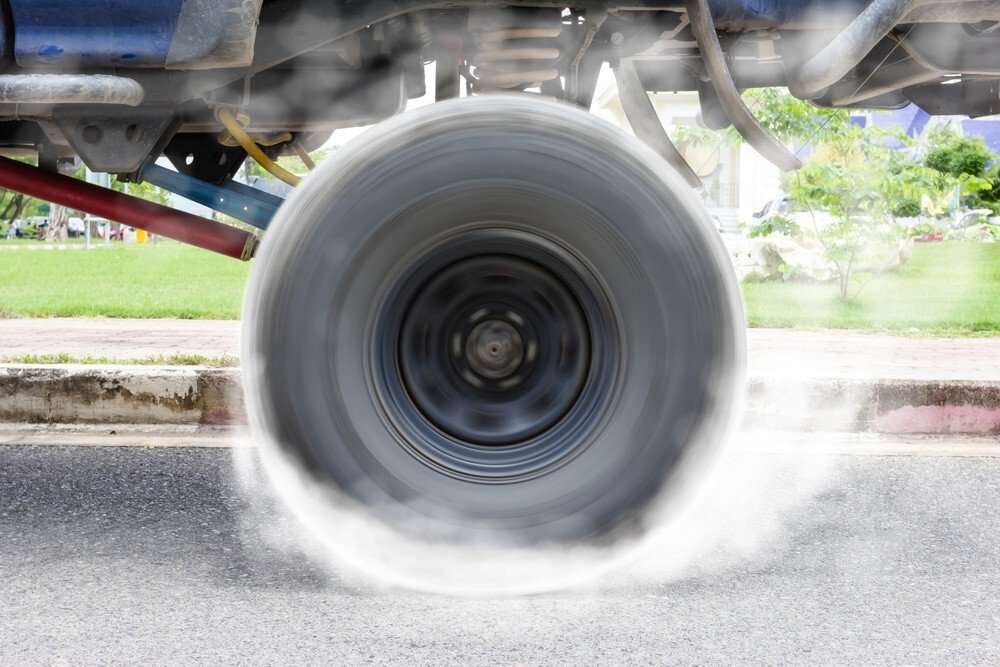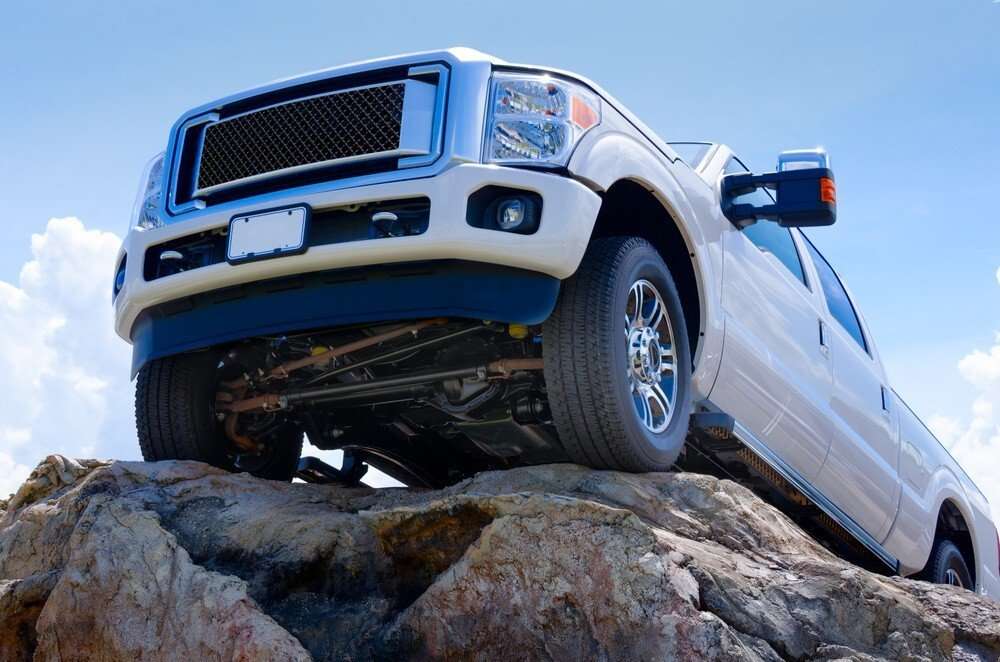If your Chevy truck losing power when accelerating, you’re not alone—losing power while driving is one of the most common Chevy truck problems. It happens for a few reasons and can be fixed with some basic vehicle troubleshooting. We’ve assembled some of the most common causes, as well as solutions so that you can get back on the road in no time!
Chevy is a well-known car manufacturer that produces various vehicles for both personal and commercial use.
However, it’s not uncommon to experience problems with your Chevy truck when accelerating. This article will explore the possible causes of this problem as well as some potential solutions.
It’s important to note that there are many factors that can be attributed to Chevy trucks losing power while accelerating, but these are the most common culprits: transmission fluid temperature, clogged fuel filter, dirty air filter, spark plugs, or sensors.
Let’s take a look at how these components contribute to Chevy trucks losing power while accelerating so you can figure out where the issue might lie!
If you’re experiencing issues with your truck and don’t know which component could be causing the problem, follow this guide to troubleshoot Chevy trucks losing power when accelerating.
Jump to
- 1 Why is chevy truck losing power when accelerating – 10 Problems & Solutions
- 1.1 Bad fuel filter
- 1.2 Dirty air filter
- 1.3 Check transmission fluid temperature
- 1.4 Worn-out Spark Plugs
- 1.5 Corroded Battery Cables and Faulty Battery Terminals
- 1.6 Bad Voltage Regulator/Starter Relay
- 1.7 Bad Cold Air Intake/Defective Throttle Body
- 1.8 Transmission Solenoid/Transmission Control Module
- 1.9 Dirty Muffler/Exhaust System
- 1.10 Common Sensors causing Chevy Truck to lose power when accelerating
- 2 Final Thoughts!
Why is chevy truck losing power when accelerating – 10 Problems & Solutions
If you are unsure where the problem might be stemming from, We have created a list of 10 problems and their solutions to help you troubleshoot why Chevy truck is losing power when accelerating.
-
Bad fuel filter
A bad fuel filter or dirty fuel filter causes low acceleration, rough idle, or engine misfire. This is one of the most common causes and is easy to fix. It’s recommended to change your fuel filter every 30,000 miles or 3 months. In order to replace the Chevy truck fuel filter properly, you have to follow these steps:
Disconnect the Chevy truck from the power supply. Jack up one side of your vehicle and remove shoulder bolts/nuts that support the right frame rail. Once it’s loose, unplug the wiring harness electrical connection. Now that you unplugged your fuel lines, you can remove the fuel rail from the vehicle by removing four bolts. Now you can replace your fuel filter by installing a new one with the O-ring removed from the old filter. Reconnect your fuel lines and put the fuel rail back into place. After that’s done, re-install your truck undercarriage and reconnect the wiring harness electrical connection.
-
Dirty air filter
If you have a dirty air filter, it can cause issues with your vehicle’s acceleration. A clean or new Air filter ensures efficient airflow throughout the engine, which translates to an increase in horsepower and acceleration. The process of the removal varies depending on the model year, but you basically just need to locate your Chevy truck’s air filter box cover and remove all the screws that hold it in place. Then, simply take out the old air filter and replace it with a new one.
-
Check transmission fluid temperature
If you are experiencing issues with your truck while accelerating and your engine light isn’t on, start by checking the temperature of your transmission fluid. It’s important that the fluid is at the correct temperature; if it’s too low or too high, your transmission could be damaged due to excessive heat or coldness.
-
Worn-out Spark Plugs
If the spark plugs are worn or old, that might be your problem. Spark plugs can increase acceleration, and they’re simple to replace.
Just follow these steps to replace your spark plugs:
Disconnect the Chevy truck from the power supply. Detach the wiring harness electrical connection at the top of your coil. Detach the wiring harness electrical connection on your distributor cap and remove it.
Remove the distributor cap by taking off the two screws that attach it to your Chevy truck’s head. Turn over the ignition key while looking at the spark plugs. Spark plugs should be facing down or towards you; if a plug isn’t facing that way, loosen the plug then turn it counterclockwise until you can pull it out.
To ensure a consistent pull on all the plugs, use a spark plug puller to remove the plugs. Install new or cleaned spark plugs and tighten them by turning clockwise until you feel a snug fit.
Do not overtighten them; just snug them to make sure they’re secure. Once you’ve replaced your spark plugs, reattach the distributor cap/wiring harness and lower the Chevy truck undercarriage.
Reconnect the wiring harness electrical connection to the coil and the distributor cap.
-
Corroded Battery Cables and Faulty Battery Terminals
Corroded battery terminals and corroded cables can also lead to a lack of acceleration. You may need to have your battery disconnected for a few minutes to check for corrosion.
If you do find it corroded, use a wire brush to clean the terminals and cables before reconnecting your Chevy truck to the power supply. If you don’t want to remove the battery from your vehicle and want to avoid corrosion in the future, there are spray-on products that prevent voltage flow problems.
-
Bad Voltage Regulator/Starter Relay
An old voltage regulator or faulty starter relay could cause your troubles. It’s recommended by mechanics and enthusiasts alike to replace your voltage regulator every 20,000 miles or 3 months.
-
Bad Cold Air Intake/Defective Throttle Body
If your truck feels sluggish or loses power when you press the gas pedal, there is a good chance that the throttle body is dirty and needs to be cleaned. The throttle body, also known as the butterfly valve, is a butterfly-shaped valve that opens and closes to allow more or less air into your engine’s cylinders.
Your accelerator pedal could be sticking or getting stuck because of a bad cold intake system or defective throttle body. If this is the case, just get it replaced by your local parts store for around $150.

-
Transmission Solenoid/Transmission Control Module
A clogged transmission solenoid or defective transmission control module can cause acceleration issues. To fix this problem, you’ll need to replace your faulty component and verify it was the issue at hand in order to have a smooth ride again.
-
Dirty Muffler/Exhaust System
If your muffler is clogged, that will certainly lead to a lack of acceleration. Mufflers get clogged with time, and this can lead to a serious problem if you don’t fix it.
To clean or replace your muffler, locate the exhaust pipes that lead to the muffler and use a wire brush to clean them. If you detect something lodged, remove it or get your exhaust pipes replaced in order to solve the problem.
-
Common Sensors causing Chevy Truck to lose power when accelerating
Sensors are important in your vehicle, and if they’re broken or malfunctioning, they can cause issues with your vehicle’s performance. Sensors can cause issues with your acceleration, and they’re super easy to replace.
The sensors that can cause your Chevy truck to accelerate slowly are:
-
Bad Mass Air Flow Sensor (MAF)
This sensor measures incoming air and informs the engine computer on whether or not it needs more fuel and air. If your MAF is broken, it will cause your Chevy truck to go bad idle, worse gas mileage, and poor acceleration. A dirty or clogged MAF sensor can also cause these issues as well. MAF sensors go for about $100, and they’re very easy to replace. On some models, it’s even located in the air inlet tube that connects to the air filter box.
-
Bad Throttle Position Sensor (TPS)
This sensor is similar to a MAF sensor in the way that it informs the engine computer as to whether or not the throttle is open. If your TPS isn’t working properly, you might have a hard time accelerating and may notice poor gas mileage. Some of the symptoms of a bad TPS are Engine stalling when driving on inclines; engine hesitates when starting from a stop, Poor fuel economy (maybe even experiencing backfires), No power in the acceleration, and poor pickup.
-
Bad Camshaft Position Sensor (CMP)
If you have a bad camshaft position sensor, it could slow down your acceleration. Symptoms of a bad CMP include: Stalling while you’re driving and the engine not turning over. Repair shops can cost around $200 to get this fixed. Replacing it is fairly easy, just disconnect the electrical connection on your distributor cap and remove the cap. Then disconnect the wire harness from the CMP sensor then pull out the cable that’s attached to it. Once removed, clean or replace with a new one and put everything back together. That’s it, you’re done!
-
Bad Fuel/Air Sensor (Oxygen Sensor)
If your oxygen sensor is old, that might cause your acceleration troubles. Oxygen sensors monitor and control the amount of air that can get into your Chevy truck’s engine; if they’re old, there could be air leaks, and this will certainly lead to a lack of acceleration.
If you find out your oxygen sensor is faulty, follow the steps below to replace it:
Disconnect battery power supply from your Chevy truck.
Unscrew the two nuts holding your oxygen sensor in place and remove them. Some plugs are located on top or front of the engine, and they have two wires connected to them. Use a wrench to loosen the nuts, and make sure not to touch any other part of your Chevy truck beside the nuts.
Tighten the new oxygen sensor by turning it clockwise to make sure it’s securely attached to your Chevy truck. Reconnect the two wires to the plug.
Reconnect your battery and test the engine for any leakages or attempt to start it; if there are none, you’ve successfully replaced your oxygen sensor.
Final Thoughts!
There are a lot of parts that can be causing your Chevy truck to slow acceleration, and we have discussed ten common problems that can cause your Chevy truck to go slow and their solutions.
There are a lot of repair shops that can fix your truck, but it is always good to update yourself on some simple fixes for common issues. It’s actually more affordable to fix your Chevy truck yourself and definitely saves you a lot of time.
We always recommend DIY fixes; they’re not easy, but if you have some spare time and a lot of patience, it will be worth the wait.
I hope this article was helpful, and you now know how to fix your Chevy Truck Slow Acceleration Problem. If you need any further assistance, just leave a comment, and we’ll be happy to help!

My name is Tom Harris, founder of this blog. I’m a mechanical engineer with 20 years of experience in the automotive industry. I’m here to help you with your vehicle’s problems, easy fixes and share my insights and experience so that you can enjoy your rides more.


When I was driving my Chevy truck home last night, I noticed that it seems to be losing power whenever I try to accelerate so I’ve been worried ever since. Thanks for mentioning how it’s best to start checking the temperature of your transmission fluid if your acceleration has issues without the engine light turning on since it might be damaged due to excessive heat or coldness. I’ll be sure to take note of this and take my truck to repair service as soon as possible.
Glad to hear that our guide help you.